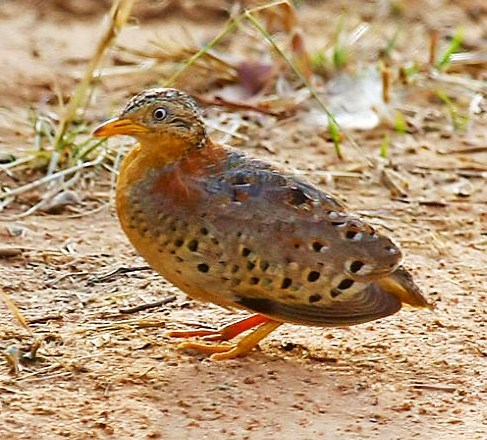Turnix tanki
 |
| Photo by Adesh Shivkar (India Nature Watch) |
Common name:
yellow-legged buttonquail (en); toirão-de-patas-amarelas (pt); turnix indien (fr); torillo tanki (es); rotnacken-laufhühnchen (de)
Taxonomy:
Order Gruiformes
Family Turnicidae
Range:
This Asian species is found from India, through Bangladesh and Nepal and into China, Korea and southern Siberia. They are also present in Myanmar, Cambodja, Laos, Vietnam and Thailand and in the Nicobar and Andaman islands.
Size:
These birds are 17 cm long and weigh 60-90 g.
Habitat:
Yellow-legged buttonquails are found in grassland, farmland, secondary growth on abandoned crop-land, grass beneath bamboo thickets, and scrub. They generally prefer open sandy ground with patches of short, rough grass.
Diet:
They feed on grain, grass seeds, green shoots from crops, ants, beetles, grasshoppers, and other insects.
Breeding:
The yellow-legged buttonquail starts nesting in March. They are polyandrous, with each female mating with several males who are then responsible for raising the young. The nest is a domes-structure made of hay or grasses in a shallow hollow in the ground. There the female lays 3-4 eggs which the male incubates alone for 12 days. The chicks leave the nest shortly after hatching, but remain with the male who protects and feeds them. They are able to fly at 10 days of age, but only acquire adult plumage about 7 weeks after hatching.
Conservation:
IUCN status – LC (Least Concern)
Although the global population size has not been quantified, this species is apparently common in much of its very large breeding range. The population is suspected to be stable in the absence of evidence for any declines or substantial threats.







